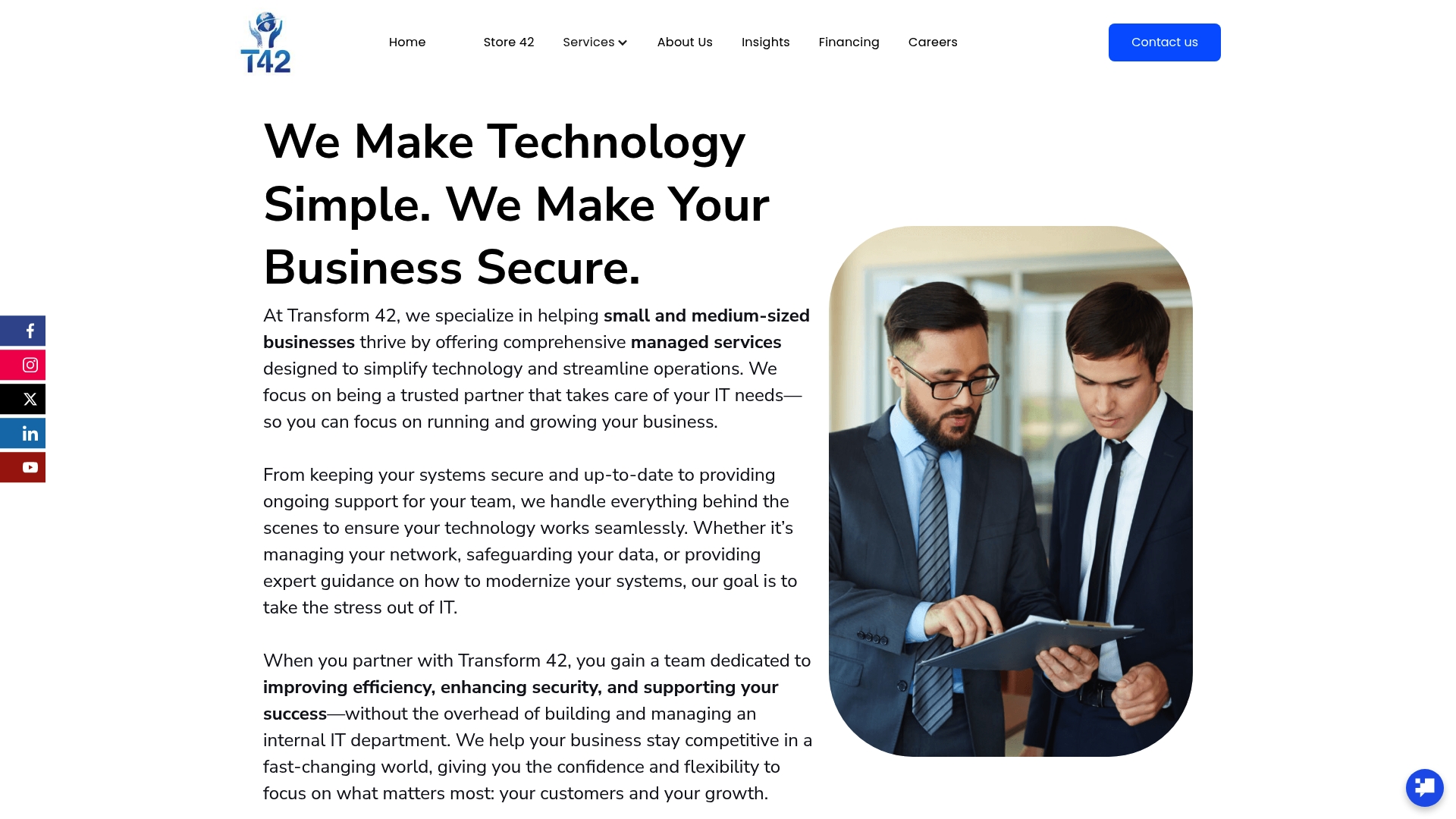Understanding Why Digital Innovation Matters for Businesses

Digital innovation is changing the way organizations compete and thrive. Companies that adopt these strategies can see up to 23 percent higher revenue growth than their slower rivals. Most people think this is all about buying fancy new tech. The real surprise is that massive results often come from shifting company culture and embracing new ways of thinking, not just new gadgets.
Table of Contents
- What Is Digital Innovation? A Clear Explanation
- The Importance Of Digital Innovation In Today’s World
- How Digital Innovation Transforms Business Operations
- Key Concepts Behind Digital Innovation Explained
- Real-World Examples Of Digital Innovation Impact
Quick Summary
| Takeaway | Explanation |
|---|---|
| Digital innovation redefines business models. | It transforms how organizations create value by integrating technology in holistic ways, beyond mere tool upgrades. |
| Focus on customer-centric solutions. | Successful digital innovation enhances customer experiences through tailored digital capabilities and responsive services. |
| Adopt a culture of continuous adaptation. | Organizations must be flexible and ready to respond to technological advancements and market changes rapidly. |
| Leverage advanced technologies strategically. | Employ tools like AI and IoT to streamline operations, reduce costs, and improve decision-making processes. |
| Recognize digital innovation as a survival tactic. | Failing to embrace digital transformation can lead to obsolescence in a rapidly evolving business environment. |
What is Digital Innovation? A Clear Explanation
Digital innovation represents a strategic approach where organizations leverage technological capabilities to fundamentally transform how they create value, operate, and engage with customers. Unlike traditional technology upgrades, digital innovation is not merely about implementing new tools, but about reimagining business models and processes through digital capabilities.
Core Characteristics of Digital Innovation
At its essence, digital innovation goes beyond technical implementation. It encompasses a holistic transformation that integrates technology, people, and organizational culture. The key characteristics include:
- Technological Integration: Seamlessly embedding digital technologies into existing business processes
- Customer-Centric Approach: Using digital capabilities to enhance customer experiences and solve real-world challenges
- Continuous Adaptation: Creating flexible systems that can quickly respond to market changes
According to Harvard Business Review, digital innovation is fundamentally about talent and strategic thinking, not just technological acquisition. Successful digital innovation requires organizations to develop a culture of experimentation, learning, and rapid iteration.
The following table summarizes the core characteristics that define digital innovation and distinguishes their specific roles within an organization.
| Characteristic | Description |
|---|---|
| Technological Integration | Embedding digital technologies seamlessly into business processes to improve overall function |
| Customer-Centric Approach | Using digital capabilities to enhance the customer experience and address key challenges |
| Continuous Adaptation | Building flexible systems to quickly adapt to changing market conditions |
| Cultural Transformation | Shifting company culture to experiment, learn, and rapidly iterate innovative ideas |
| Strategic Alignment | Aligning technology initiatives with long-term organizational vision and goals |
Practical Implications for Businesses
For businesses, digital innovation means more than acquiring new software or hardware. It represents a comprehensive strategy to:
- Improve operational efficiency
- Create new revenue streams
- Enhance competitive positioning
- Develop more responsive and agile organizational structures
Digital innovation enables companies to break traditional operational constraints, allowing them to develop more personalized customer experiences, optimize internal workflows, and respond quickly to emerging market opportunities. By viewing technology as a strategic enabler rather than just a functional tool, businesses can unlock significant competitive advantages and drive sustainable growth.
The Importance of Digital Innovation in Today’s World
In an increasingly interconnected global economy, digital innovation has become a critical driver of business success and organizational resilience. Companies that understand and effectively implement digital innovation strategies can transform potential technological challenges into significant competitive advantages.
Driving Economic and Competitive Transformation
Digital innovation is not just a technological trend but a fundamental mechanism for economic growth and organizational adaptation. By integrating advanced technologies and reimagining traditional business processes, organizations can create unprecedented value and efficiency.
Below is a table highlighting how digital innovation drives economic and competitive transformation by linking key impacts to their business significance.
| Economic Impact | Business Significance |
|---|---|
| Productivity Enhancement | Automates tasks and streamlines workflows to increase organizational efficiency |
| Market Expansion | Reaches new customer segments using digital platforms and channels |
| Resource Optimization | Reduces operational costs and improves the allocation and use of business assets |
| Agility and Adaptation | Allows companies to quickly respond to technological and market disruptions |
| Value Creation | Enables development of new services, products, and revenue streams |
Key economic impacts of digital innovation include:
- Productivity Enhancement: Automating complex tasks and streamlining operational workflows
- Market Expansion: Reaching new customer segments through digital platforms
- Resource Optimization: Reducing operational costs and improving resource allocation
According to the OECD, digital innovation is pivotal for driving productivity growth and enabling organizations to develop more agile and responsive business models.
Strategic Imperative for Business Survival
In today’s rapidly changing technological landscape, digital innovation represents more than an optional strategy it is a critical survival mechanism. Organizations that fail to embrace digital transformation risk becoming obsolete in their respective industries.
Businesses must recognize digital innovation as a comprehensive approach that encompasses:
- Continuous technological learning
- Agile organizational culture
- Customer-centric technological solutions
- Proactive adaptation to market disruptions
By viewing digital innovation as a strategic imperative, businesses can position themselves to navigate complex market dynamics, anticipate technological shifts, and maintain a competitive edge in an increasingly digital world.
How Digital Innovation Transforms Business Operations
Digital innovation fundamentally reimagines how businesses function, moving beyond traditional operational frameworks to create more responsive, intelligent, and efficient organizational systems. By integrating advanced technologies and data-driven strategies, companies can dramatically restructure their internal processes and external interactions.
Reengineering Operational Workflows
At the core of digital innovation lies the ability to transform complex business operations through technological integration. This transformation encompasses several critical dimensions of organizational performance:
- Process Automation: Eliminating manual tasks and reducing human error
- Real-Time Data Analytics: Enabling faster, more informed decision-making
- Seamless Communication: Breaking down departmental silos and enhancing collaboration
Traditional linear business processes are replaced with dynamic, interconnected systems that can adapt and respond rapidly to changing market conditions. This shift allows organizations to become more agile, predictive, and customer-focused.
Technology as an Operational Catalyst
Digital innovation introduces powerful technological tools that fundamentally alter how businesses conceptualize and execute their core functions. Key technological enablers include:
- Artificial intelligence and machine learning systems
- Cloud computing infrastructure
- Advanced data analytics platforms
- Internet of Things (IoT) technologies
According to McKinsey, these technologies enable businesses to create more intelligent, responsive operational models that can anticipate market shifts and customer needs with unprecedented precision.
By reimagining operations through a digital lens, businesses can unlock new levels of efficiency, create more personalized customer experiences, and develop innovative service delivery models that were previously impossible.
 Digital innovation transforms business operations from rigid, hierarchical structures into flexible, interconnected ecosystems capable of rapid adaptation and continuous improvement.
Digital innovation transforms business operations from rigid, hierarchical structures into flexible, interconnected ecosystems capable of rapid adaptation and continuous improvement.
Key Concepts Behind Digital Innovation Explained
Digital innovation represents a complex framework of interconnected technological and strategic principles that enable organizations to create transformative value. Understanding these foundational concepts provides businesses with a roadmap for successful digital transformation and strategic technological integration.
Core Theoretical Foundations
At its fundamental level, digital innovation is built upon several critical theoretical frameworks that guide technological adoption and strategic implementation. These frameworks emphasize a holistic approach to technological integration that goes far beyond simple technical upgrades.
Key theoretical foundations include:
- Systems Thinking: Understanding organizations as interconnected networks
- Complexity Theory: Recognizing adaptive and dynamic organizational behaviors
- Network Theory: Emphasizing interconnectedness and information flow
These theoretical perspectives help organizations understand technology not as isolated tools, but as integrated ecosystems that continuously interact and adapt to changing environments.
Strategic Implementation Principles
Successful digital innovation requires a structured approach that balances technological capabilities with strategic organizational objectives. Organizations must develop comprehensive strategies that align technological potential with business goals.
Critical strategic implementation principles encompass:
- Continuous learning and skill development
- Flexible technological architectures
- Customer-centric design thinking
- Rapid experimentation and iterative development
According to McKinsey Global Institute, these principles enable businesses to create dynamic, responsive organizational models that can quickly adapt to technological disruptions and market changes.
By understanding and applying these key concepts, organizations can transform digital innovation from a technical exercise into a powerful strategic capability that drives sustainable competitive advantage and organizational growth.
Real-World Examples of Digital Innovation Impact
Digital innovation is not an abstract concept but a tangible force transforming industries across the global economy. By examining concrete examples, businesses can understand how technological integration creates substantial value and drives organizational transformation.
Industry Transformation Scenarios
Different sectors demonstrate unique approaches to digital innovation, showcasing how technological strategies can revolutionize traditional business models. Each industry leverages digital capabilities to address specific challenges and unlock new opportunities.
Notable digital innovation impact areas include:
- Healthcare: Telemedicine platforms expanding patient access
- Retail: Personalized shopping experiences through AI recommendations
- Manufacturing: Predictive maintenance using IoT sensors
- Financial Services: Digital banking and blockchain technologies
These examples illustrate how digital innovation transcends mere technological implementation, fundamentally restructuring how organizations deliver value and interact with customers.

Economic and Operational Breakthrough Examples
Companies worldwide are deploying digital innovation strategies to create significant competitive advantages. These transformative approaches demonstrate the profound potential of technological integration:
- Reducing operational costs through automation
- Creating new revenue streams
- Enhancing customer engagement
- Improving product development cycles
According to Gartner Research, organizations that successfully implement digital innovation can achieve up to 23% higher revenue growth compared to their less digitally mature competitors.
By studying these real-world examples, businesses can develop strategic insights into how digital innovation converts technological potential into tangible organizational performance, driving sustainable competitive advantage in an increasingly digital global marketplace.
Make Digital Innovation a Reality for Your Business
You have read how digital innovation can unlock competitive advantages, drive growth, and safeguard your business against disruption. If your company struggles with outdated workflows, slow adaptation to new technology, or missed customer opportunities, it is time to take the next step. The article highlights how successful businesses are reengineering processes with digital tools, building a culture of agility, and leveraging technology as a strategic resource. Are you ready to do the same?

Experience a seamless path to digital transformation with Transform 42 Inc. Our consulting team specializes in making the complex simple for small and medium-sized businesses. From managed IT services to tailored digital strategies, we help you build the resilient, customer-focused organization described in this article. Visit our main site to see how we turn innovation goals into tangible business results. Do not let your competitors set the pace—reach out today and secure your future. Contact Transform 42 Inc. now to begin your digital journey.
Frequently Asked Questions
What is digital innovation?
Digital innovation refers to a strategic approach where organizations use advanced technologies to transform how they create value, operate, and engage with customers. It goes beyond simply upgrading tools; it involves reimagining business models and processes.
Why is digital innovation important for businesses?
Digital innovation is crucial for businesses as it enhances operational efficiency, creates new revenue streams, fosters competitive positioning, and develops agile organizational structures. It helps companies adapt to market changes and improve customer experiences.
How does digital innovation transform business operations?
Digital innovation transforms business operations by reengineering workflows through technological integration, such as process automation and real-time data analytics. It replaces traditional linear processes with dynamic, interconnected systems, enabling organizations to respond quickly to changes.
What are the key elements of successful digital innovation?
Successful digital innovation encompasses continuous technological learning, customer-centric design thinking, flexible technological architectures, and rapid experimentation. These elements help organizations create agile, responsive models capable of adapting to disruptions and market demands.

